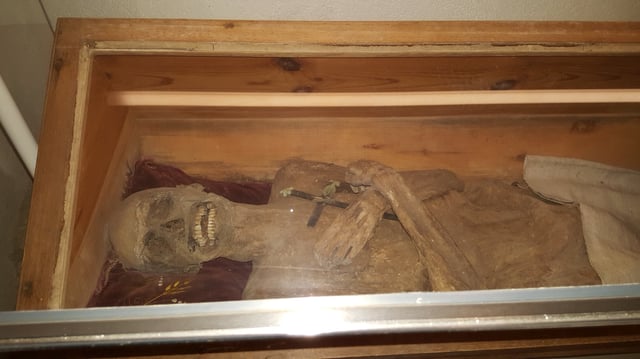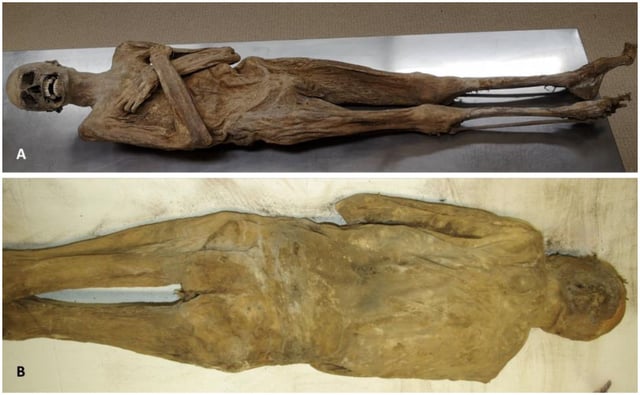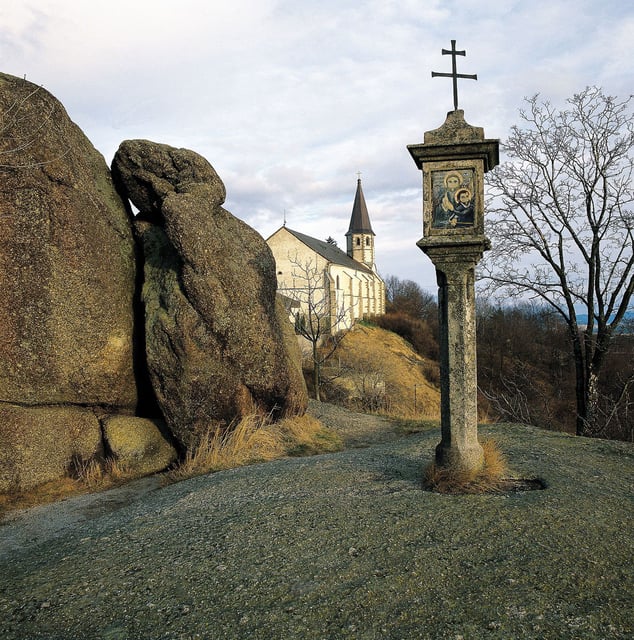Overview
- The mummy, found in the crypt of St. Thomas am Blasenstein, Austria, has been identified as Franz Xaver Sidler von Rosenegg, a parish vicar who died in 1746.
- An unprecedented embalming method involving rectal stuffing with wood chips, twigs, fabrics, and zinc chloride was used to preserve the body.
- CT scans, radiocarbon dating, and autopsy confirmed the vicar's identity and revealed a high-quality diet, smoking habits, and tuberculosis at the time of death.
- The study suggests this preservation technique may have been more widespread but overlooked due to post-mortem decay in other cases.
- The findings, published in Frontiers in Medicine, open new avenues for research into historical embalming and cultural attitudes toward death.


